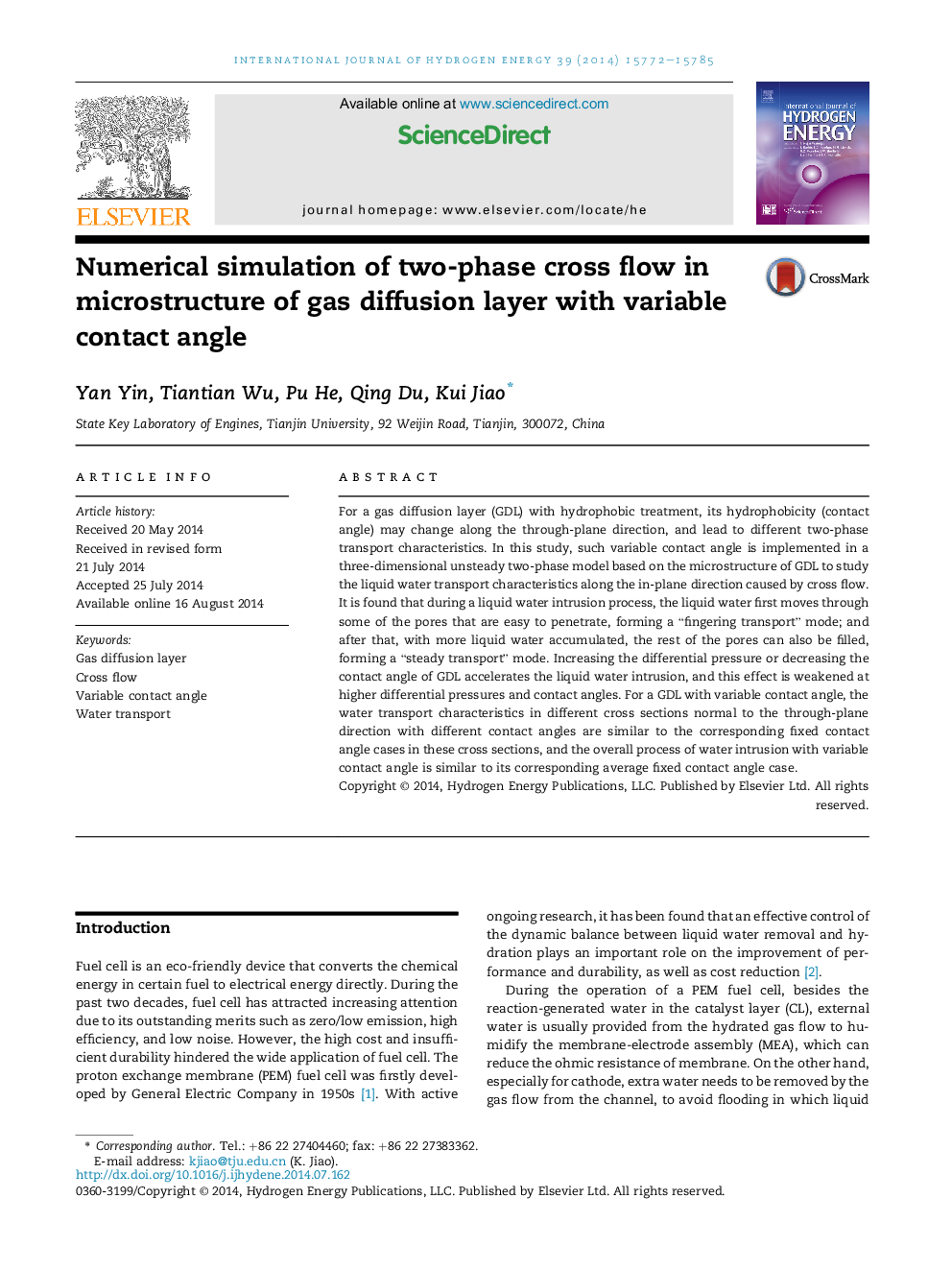| Article ID | Journal | Published Year | Pages | File Type |
|---|---|---|---|---|
| 1272417 | International Journal of Hydrogen Energy | 2014 | 14 Pages |
•A 3D two-phase model of GDL microstructure with variable contact angle is developed.•Water flows through GDL first in “fingering” mode and then in “steady” mode.•Increasing pressure or decreasing contact angle accelerates water transport.•Transport with variable contact angle is similar to the average contact angle case.
For a gas diffusion layer (GDL) with hydrophobic treatment, its hydrophobicity (contact angle) may change along the through-plane direction, and lead to different two-phase transport characteristics. In this study, such variable contact angle is implemented in a three-dimensional unsteady two-phase model based on the microstructure of GDL to study the liquid water transport characteristics along the in-plane direction caused by cross flow. It is found that during a liquid water intrusion process, the liquid water first moves through some of the pores that are easy to penetrate, forming a “fingering transport” mode; and after that, with more liquid water accumulated, the rest of the pores can also be filled, forming a “steady transport” mode. Increasing the differential pressure or decreasing the contact angle of GDL accelerates the liquid water intrusion, and this effect is weakened at higher differential pressures and contact angles. For a GDL with variable contact angle, the water transport characteristics in different cross sections normal to the through-plane direction with different contact angles are similar to the corresponding fixed contact angle cases in these cross sections, and the overall process of water intrusion with variable contact angle is similar to its corresponding average fixed contact angle case.
